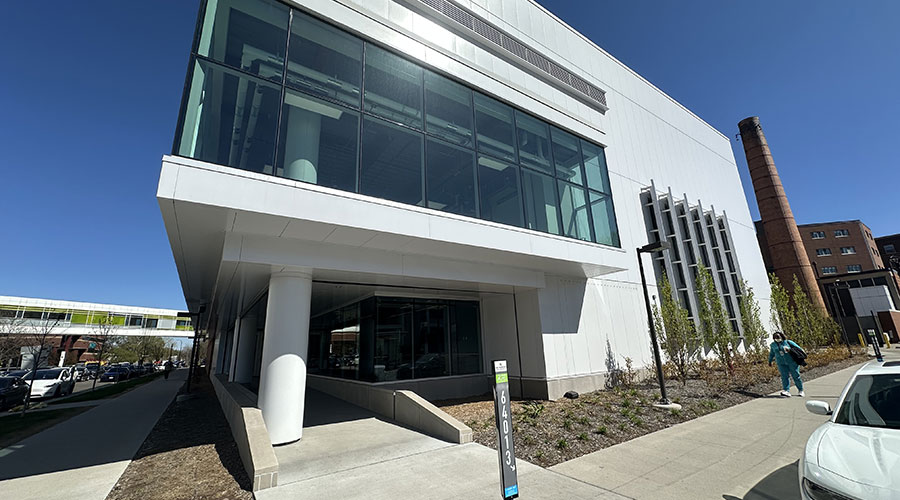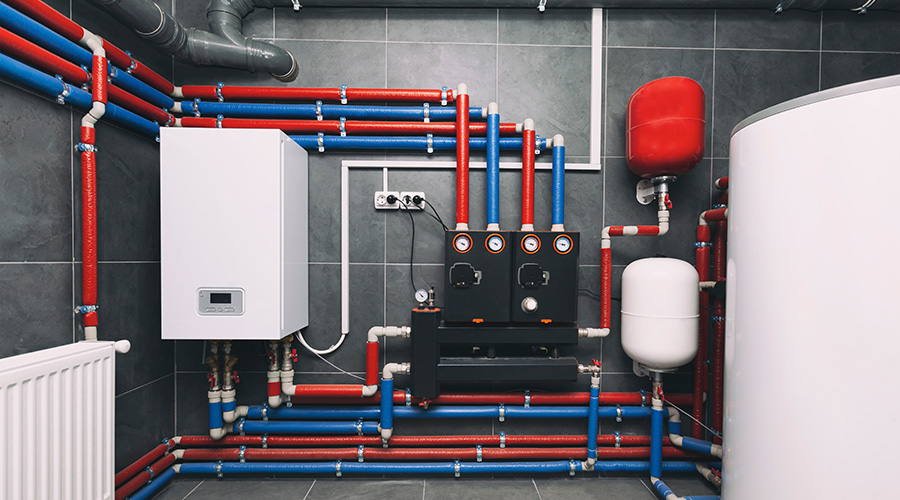Smart Boiler Project Slashes Twin Cities Hospital Energy Bills
High-tech boilers slash hospital's energy bills by $2 million annually.
Maintenance and engineering managers at institutional and commercial facilities face mounting challenges in adopting smart boiler technologies due to rising compliance demands, limited budgets and a growing shortage of skilled labor — all against a backdrop of increasingly complex operational needs.
Today’s smart commercial boiler technology offers managers several operational advantages, including real-time data and predictive maintenance capabilities, which can provide significant cost and energy savings.
In 2020, the facilities team at Allina Health’s Abbott Northwestern Hospital, the largest private hospital in Minnesota’s Twin Cities, began planning to consolidate four aging boiler plants — some dating back to the 1950s — into one centralized facility.
The result was a $200 million, 70,000-square-foot central utility plant (CUP) that now provides steam and chilled water for heating and cooling 1.8 million square feet of space via 1,000 linear feet of underground utility distribution tunnels while also generating on-site electricity.
Updating system
Replacing eight legacy boilers with three high-efficiency smart boilers from Rentech doubled the hospital’s steam and cooling capacity, says Smith Bradley, the hospital’s facilities maintenance and engineering manager.
These boilers, paired with advanced combustion controls from Preferred Utilities Manufacturing and a heat-recovery steam generator turbine boiler, now supply heating, cooling, emergency and normal power for the Abbott Northwestern Hospital campus, the Children’s Minnesota campus and the associated medical office building.
“Since coming online in May 2024, the CUP has helped cut our gas and electric bill by nearly $2 million a year — about $4,000 a day,” Bradley says. “At the same time, we’ve employed pollution control equipment to protect neighborhood air quality. The efficiency of this system puts us on a clear path to a strong return on investment.”
Bradley says that while physical plants are energy-intensive operations, advances in mechanical and electrical systems have substantially improved their efficiency over the decades. Upgrading the 70-year-old equipment was crucial to achieving the project’s operational and cost-saving goals.
The three-story physical plant features an 80,000-pound-per-hour boiler, a 60,000-pound-per-hour boiler, a gas combustion turbine with an 80,000-pound-per-hour heat-recovery steam generator, four 2,500-ton chillers, and six 3,333-gallons-per-minute cooling towers. Project engineers estimate that the new plant will achieve an energy efficiency rating of 75 percent, which is a 14-percentage point improvement over the outdated facility. The heat-recovery steam generator, coupled with the combustion turbine generator, saves roughly 15 percent of electric and gas costs compared to the previous gas-fired boilers and purchased electric power.
The new high-efficiency boilers are equipped with advanced economizers that recover flue gas heat to preheat the feedwater, significantly reducing the energy required to generate steam, Bradley says. Similar technology was implemented on the two water tube boilers and the heat-recovery steam generator tied to the new gas-fired turbine.
Another high-performance addition was Preferred Industries’ boiler turbine management system and the fully metered combustion control panels for two of the boilers, which improve steam production efficiency by managing the fuel and air mixture during the combustion process. In addition to providing a 10:1 turndown ratio and on-the-run dual fuel transitions — natural gas to fuel oil — the advanced control systems continuously adjust inputs such as steam flow, feedwater and fuel gas to maintain optimum efficiency and emissions performance.
“The built-in system redundancy allows boilers to seamlessly transfer the load to the main header at a moment’s notice, ensuring uninterrupted service,” Bradley says. “This means we can take a boiler offline for repairs or preventive maintenance without affecting operations.”
Joel Williams is a freelance writer based in Frankfurt, Illinois.
Related Topics:













